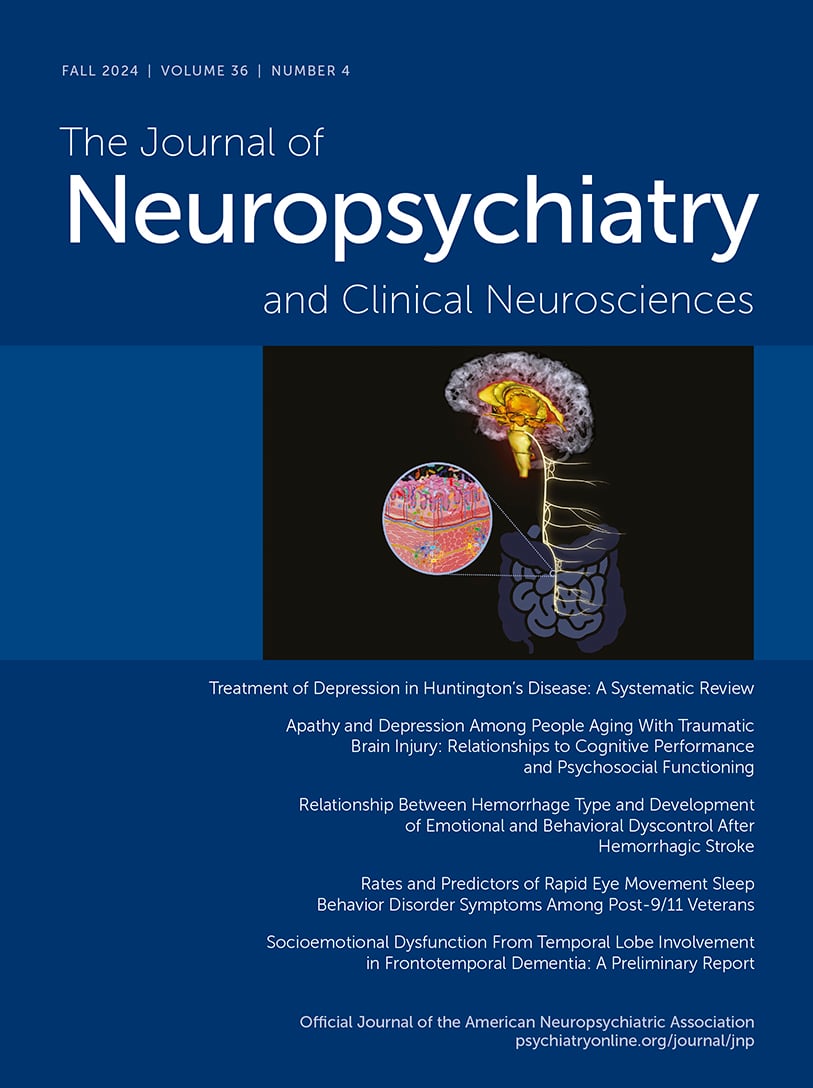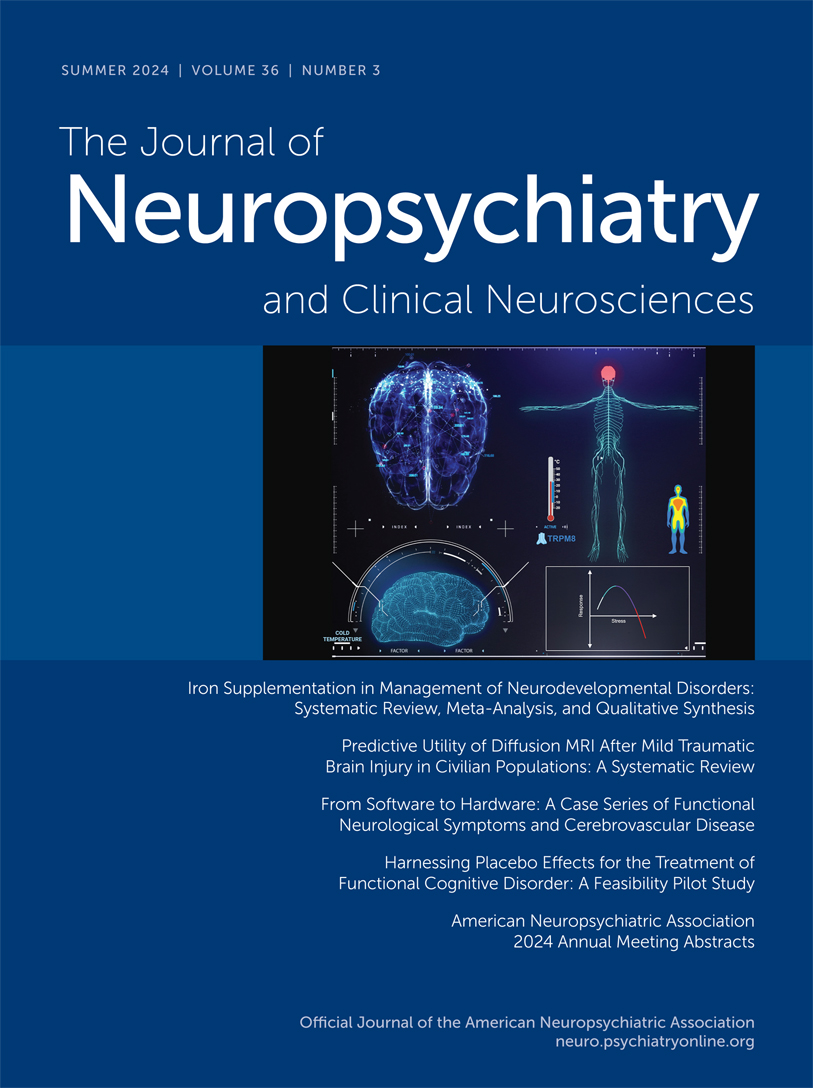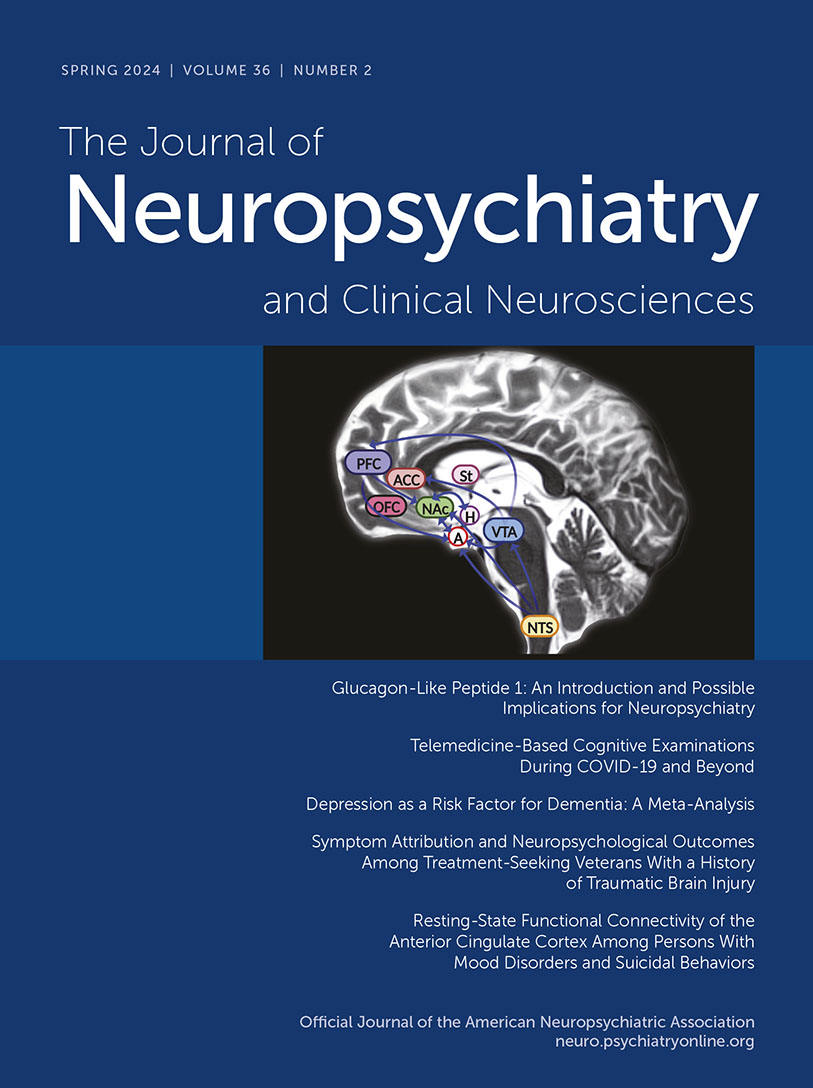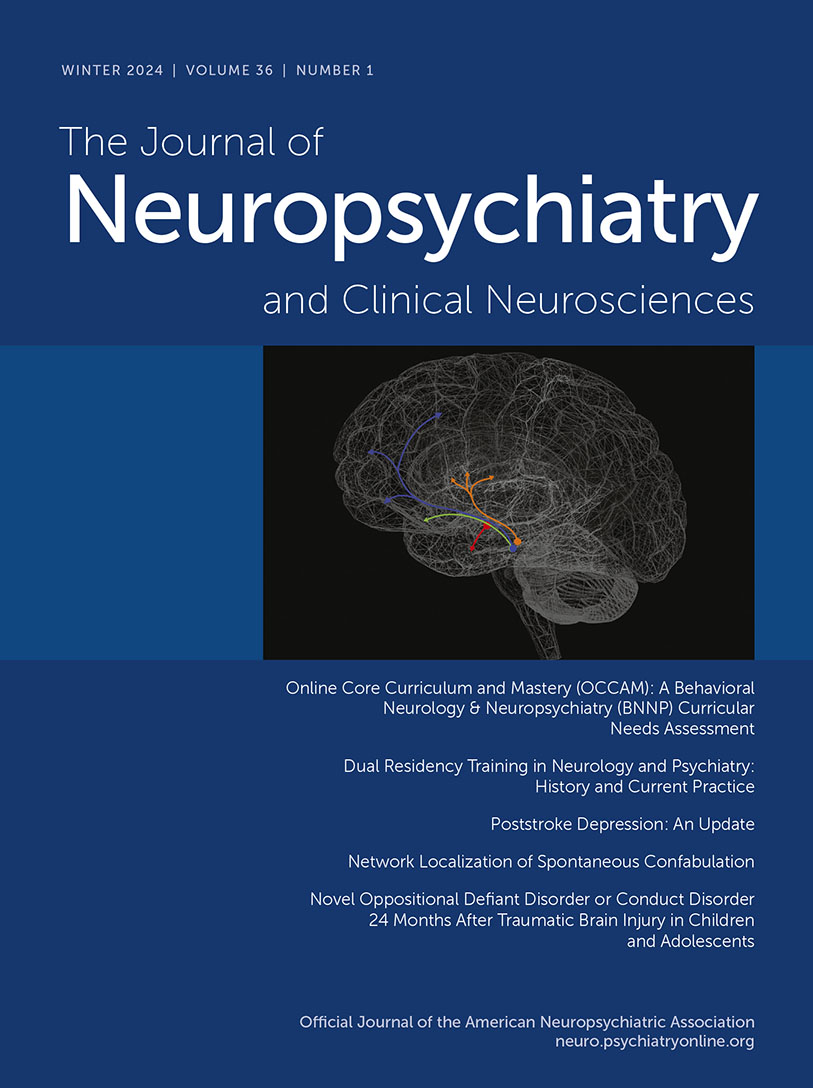The Journal of Neuropsychiatry and Clinical Neurosciences
- Volume 31
- Number 2
- April 2019
Windows to the Brain
Articles
Publication date: 08 November 2018
Pages104–111Objective: Although delirium is the most common neurobehavioral complication after stroke, its motor subtypes—hypoactive, hyperactive, mixed, and none—as well as their risk factors are not well characterized. Motor subtypes influence recognition and ...
https://doi.org/10.1176/appi.neuropsych.18040073Publication date: 08 November 2018
Pages112–122Objective: The overwhelming focus of research on memory following traumatic brain injury (TBI) has been on anterograde amnesia, and very little attention has been paid to retrograde amnesia. There is evidence to suggest that retrograde autobiographical ...
https://doi.org/10.1176/appi.neuropsych.18010015Publication date: 12 December 2018
Pages123–131Objective: The authors aimed to elucidate the links between traumatic brain injuries (TBIs) and criminal convictions in a sample of 724 Canadian males with and without criminal records followed up to age 24. Methods: Prospectively collected data were ...
https://doi.org/10.1176/appi.neuropsych.18040094Publication date: 12 December 2018
Pages132–136Objective: The presence of repetitive behaviors is one of the core criteria for behavioral variant frontotemporal dementia (bvFTD). Patients with bvFTD often have perseverative, stereotyped, or compulsive-ritualistic behavior as an early aspect of their ...
https://doi.org/10.1176/appi.neuropsych.18060148Publication date: 18 December 2018
Pages137–142Objective: Anti-N-methyl-D-aspartate receptor (NMDAR) encephalitis is an autoimmune disorder characterized by prominent neuropsychiatric symptoms. Given the nature of its pathophysiology, psychiatrists tend to be one of the first clinicians encountering ...
https://doi.org/10.1176/appi.neuropsych.18010005Publication date: 18 December 2018
Pages143–151Objective: Evidence suggests that the cortico-striatal-thalamo-cortical circuitry plays an important role in schizophrenia pathophysiology. Cerebellar contribution from deep cerebellar nuclei to the circuitry has not yet been examined. The authors ...
https://doi.org/10.1176/appi.neuropsych.17110276Publication date: 21 November 2018
Pages152–158Objective: The selection of a bitemporal (BT) or right unilateral (RUL) electrode placement affects the efficacy and side effects of ECT. Previous studies have not entirely described the neurobiological underpinnings of such differential effects. Recent ...
https://doi.org/10.1176/appi.neuropsych.18080177Clinical and Research Reports
Publication date: 21 November 2018
Pages159–164Objective: Higher levels of anger can have a major impact on treatment and recovery among stroke patients. Methods: The authors identified the presence of anger in patients with acute stroke, as well as state and trait anger and anger expression and control, ...
https://doi.org/10.1176/appi.neuropsych.18030037Publication date: 12 December 2018
Pages165–169Objective: Amyotrophic lateral sclerosis (ALS) is a neurodegenerative disease with prominent motor symptoms. Patients with ALS may also manifest frontal behavior symptoms and cognitive decline, including impairment in facial emotion recognition. The ...
https://doi.org/10.1176/appi.neuropsych.18040086Opinion
Introspections
Case Reports
Letters
Past Issues
View Issues Archive
Vol. 36 | No. 4

Vol. 36 | No. 3

Vol. 36 | No. 2
